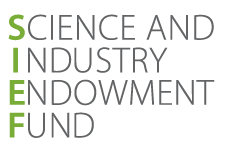Playing a vital role in discovering the microbial universe hidden under our feet
SIEF supported research is playing a vital role in discovering the microbial universe hidden under our feet.
The challenge
Knowledge about soil communities is currently limited. However, we do understand the importance of microbes to sustain biodiversity and they form the basis of the agricultural systems we depend on to feed the world. The challenge is to better understand relationships in our soil ecosystems, assessing the relative merits of different interventions and improving on them.
The response
Newly developed genomics tools are being used to study the complex microbial communities found in the soil, finding new species and understanding exactly how soil biodiversity is related to ecosystem function, agricultural production and above-ground biodiversity of animals and plants. Microbial communities can then be associated with environmental conditions such as vegetation, and soil type, pH and salinity.

New genomics tools being used to study complex microbial communities in soil.
The collaboration
CSIRO scientists, with their collaborators The University of Western Australia, Curtin University of Technology, Department of Environment and Conservation Western Australia, Bioplatforms Australia Limited and Director of National Parks, are exploring the diversity of soil microbes across the whole of the Australian continent. The collaborators have engaged and worked with Indigenous Communities to collect the samples.
Projected impact
Hundreds of locations have been visited in every state; from the cool forests of Tasmania to the hot deserts of central Australia and from the alpine grasslands of Victoria to the sand dune communities of the south coast. Progression along the path to impact resulting from these studies include:
- Environmental decision making has been made easier due to the suite of innovative tools and approaches in ecogenomics.
- A geo-referenced framework soil microbial biodiversity dataset for Australia has been developed that is associated with a range of environmental data layers that can be used as a reference for comparative analysis initiated.
- A database of environmental data for samples collected has been established creating ease of access for the public.
- Discussions have been initiated with the mining industry in Western Australia to apply the methods developed in this project to biodiversity assessments required for new resource projects allowing extrapolation from one environment to another without having to redo the groundwork.
Download: Global Ecosystem Assessment Initiative brochure [pdf · 82kb]
